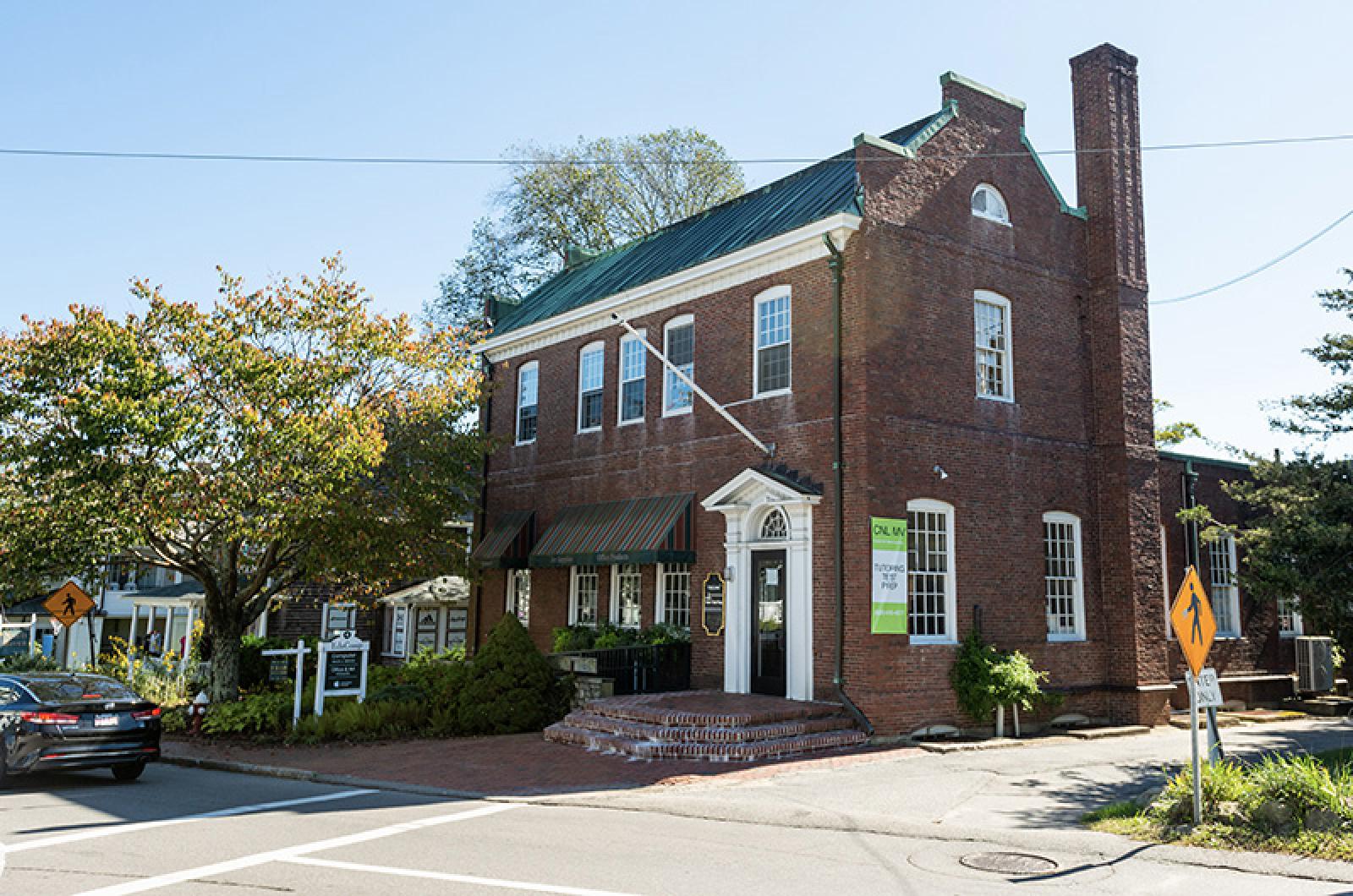The Martha’s Vineyard Commission was scheduled to decide Thursday night whether to approve or deny a major redevelopment plan for the former Edu Comp building in Vineyard Haven that has been under review for the past eight months.
Xerxes Agassi, an Island-based real estate developer and property manager, wants to convert the distinctive red brick building at 4 Main street into 14 residential condominiums and three ground-floor office units. Mr. Agassi bought the property early this year from the Gregory family, who formerly ran Edu Comp, an art and office supply and computer store. The purchase price was $2.4 million.
Although it has been scaled back somewhat from an earlier version, the redevelopment plan would still significantly increase the size of the building — from roughly 7,800 square feet to 21,000 square feet. If the plan is approved, it would become the second largest building in downtown Vineyard Haven, according to an analysis by commission staff.
Size and scale have been sticking points with the commission during public hearings that began in October 2021.
Beyond an architectural overhaul of the building, the main thrust of the project is to create residential apartments — primarily employer-paid work force housing, likely for the Vineyard Wind project and the Martha’s Vineyard Hospital, according to commission documents and testimony from Mr. Agassi during the hearings.
Of 14 planned apartments, nine would be designated as work force housing with no income restrictions, while two would be designated as affordable with income restrictions. Three of the units would be market-rate rental apartments. At a meeting of a key commission subcommittee Monday, a late proposal from the developer that would put a sunset clause on the restricted work force units caused a few raised eyebrows among commissioners. Mr. Agassi is proposing that one unit designated as community housing for a member of the Island work force have the income restriction (between 81 and 150 per cent of area median income), run for 10 years. The income restriction (80 per cent of area median income) on a second unit designated as affordable housing would be permanent. The nine units designated as work force housing with no income restrictions would expire in seven years, under the proposal.
Other offers from the developer include a pledge to take steps to save a cherry tree that graces the front of the building, along with two other trees — one an elm — along the edge of the property.
Mr. Agassi has secured provisional approval to tie into the town wastewater treatment plant.
The site is in an archaeologically sensitive area, known as the Vincent Site, according to an abstract done by the Public Archaeology Laboratory (PAL). A survey done in October found 410 artifacts, according to the PAL report, which recommends that below-grade disturbance be limited at the site.
An ongoing dispute between the developer and neighboring property owners over driveway easements remains unsettled. At a meeting of the land use planning subcommittee Monday, commissioners said they could not mediate or become involved in the dispute but that it would be noted in some way as part of any final decision.
The subcommittee reviewed the final offers from the developer and drafted a list of possible conditions for approval.
But with time running out and a busy agenda of other items, the committee took no vote on whether to recommend or deny the project — leaving it to the full commission to decide after deliberations Thursday night.







Comments
Comment policy »